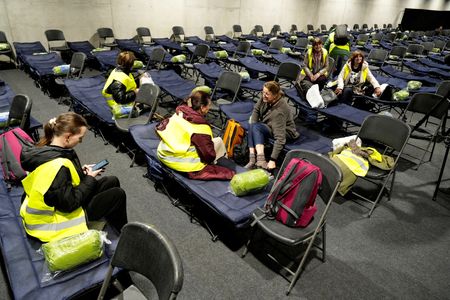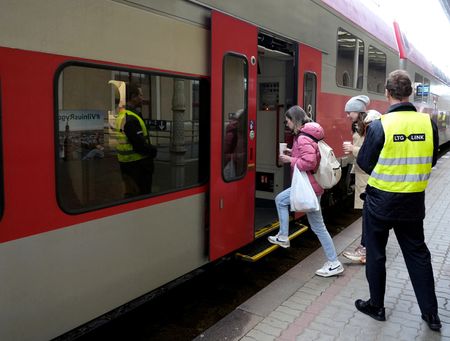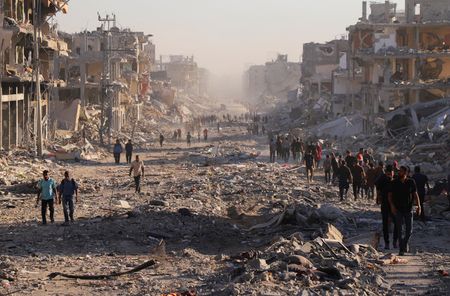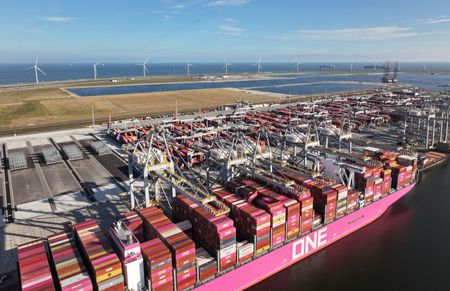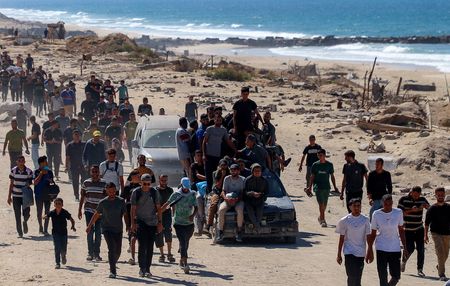By Andrius Sytas
KAUNAS, Lithuania (Reuters) -Alarmed by Russia’s vast military spending since its 2022 invasion of Ukraine, the three Baltic states are drawing up contingency plans to deal with the possibility of hundreds of thousands of people fleeing a Russian troop buildup or attack.
Estonia, Latvia and Lithuania have long voiced fears to fellow NATO states about possible Russian aggression, citing Russian cyber attacks, disinformation campaigns and incursions over the past few months by Russian fighter jets and drones.
Russia says it has no plans to attack NATO. But the three countries, which were annexed by Moscow during World War Two, have doubled defence spending since the all-out attack on Ukraine that followed repeated Russian denials of any such plan.
“Threats could vary,” said Renatas Pozela, who as head of Lithuania’s firefighting service is involved in the contingency planning, which has been stepped up since the three countries agreed to cooperate on civil protection in May. Details of the numbers of potential evacuees officials are preparing for are being reported here for the first time.
WHAT ARE THE SCENARIOS?
“It’s possible we will see a mighty army along the borders of the Baltics, with the apparent goal of taking all three countries in three days to a week,” Pozela said.
Sabotage of communications or transport links, a mass influx of migrants, civil unrest among Russian-speaking minorities or fake news sparking mass flight are other scenarios discussed in local media and beyond.
“We talk about this every month, every week – at work, everywhere,” said Arminas Raudys, 31, a volunteer playing the role of an evacuee in an exercise in Lithuania this week.
The role-play involved the evacuation of just a hundred people from the capital Vilnius, but officials interviewed by Reuters said contingency planning – still largely under wraps – was being made for much larger numbers.
Half of those living within 40 km (25 miles) of the borders of Russia and Belarus – about 400,000 people – are among them, Pozela said.
The western town of Kaunas has plans to house 300,000 people in schools, universities, Catholic churches and the arena where Robbie Williams and Roger Waters performed recently. Similar efforts are underway in other towns.
Assembly points, including in Vilnius, have been selected, trains and buses designated and supplies such as toilet paper and hiking beds stockpiled in warehouses, an official at the firefighting service said.
Those fleeing by car would be directed to secondary roads, to clear others for the incoming army, with a map already available showing the towns where they can seek refuge.
“It’s a very reassuring message to our society that we are ready and we are planning,” Lithuanian Foreign Minister Kestutis Budrys told Reuters. “We have done our homework.”
ARE PEOPLE EXPECTED TO MOVE BEYOND THE BALTICS?
None of the three Baltic countries have detailed plans to move anyone beyond their borders.
Two paved roads and several forest paths connect them to Poland through the Suwalki Gap – a narrow wooded part of Poland between Russia and Belarus, and incoming military vehicles would be given priority over those trying to escape to Poland.
“We have to take account of the risk (of the Suwalki Gap),” said Ivar Mai, mass evacuation advisor to the Estonian Rescue Board, referring to the possibility Russian forces could seek to cut the Baltics off from their only border with a fellow-NATO state.
Estonia is preparing plans to rehouse a tenth of its 1.4 million people in makeshift shelters, with many others seen as likely to move in with relatives, said Mai.
Two thirds of the Russian-speaking town of Narva, population 50,000, are among those who could be expected to move, with the government assisting at least half of them. “It’s only for those who don’t have other places to go,” he said.
Latvia estimates that a third of its 1.9 million people might leave their homes, said Ivars Nakurts, the deputy head of Latvia’s State Fire and Rescue Service.
“You plan for everything,” he said.
(Reporting by Andrius Sytas in the Baltics, Essi Lehto and Anne Kauranen in Finland, Johan Ahlander and Simon Johnson in Sweden, Barbara Erling in Poland; editing by Philippa Fletcher)

